Volume 45 Number 2 (2014.6)
Special Feature
Sensors
Part I. Special Feature
Overview
Research Reports
-
pages 1-9
Motohiro Fujiyoshi, Yutaka Nonomura, Hirofumi Funabashi, Yoshiteru Omura, Teruhisa Akashi, Yoshiyuki Hata and Masayoshi Esashi
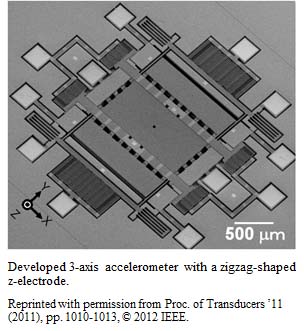
A fully-differential 3-axis accelerometer with a novel zigzag-shaped z-electrode (ZSZ) and a method for chip-level warpage control has been developed for motion control of automobiles and robots. An experimental prototype chip demonstrated good performance, with low cross-axis sensitivity and highly linear z-axis output.
-
3. Development of Inertial Force Sensing System for Control of Partner Robot
 (2,406kB)
(2,406kB)pages 11-19
Yutaka Nonomura, Motohiro Fujiyoshi and Hisayoshi Sugihara
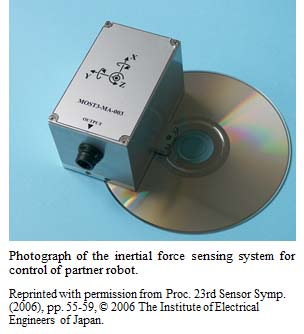
An inertial force sensing system for control of a partner robot was developed. The system provides a set of the true posture angles of the robot. The system consists of three angular rate sensors, three acceleration sensors, and a digital signal processor (DSP). Partner robots with the installed system worked well at the WORLD EXPO 2005 in Aichi, Japan.
-
pages 21-27
Tomohiko Mori, Yoshihiro Kikuzawa and Koji Noda
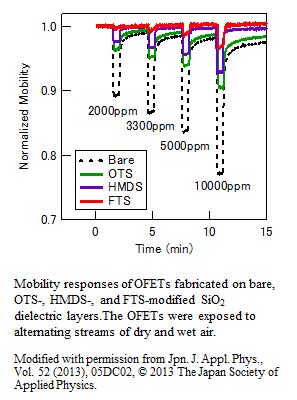
Organic field-effect transistors (OFETs) fabricated on chemically modified SiO2 dielectric layers are proposed as high-selectivity gas sensors. Although the selectivity of conventional SnO2 gas sensors is a problem, the sensitivity and selectivity of OFET-based gas sensors can be finely tuned by using a variety of organic materials.
-
5. Alcohol Detection in Exhaled Air Using NDIR Absorption Method
 (1,160kB)
(1,160kB)pages 29-34
Norio Fujitsuka, Masatoshi Yonemura, Kiyomi Sakakibara, Toshiyuki Taguchi and Toshihiro Wakita
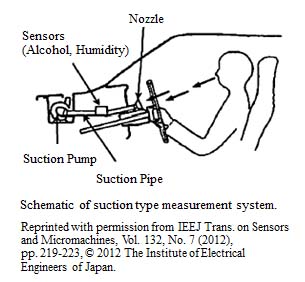
In order to reduce the number of traffic accidents caused by drunken driving, a suction type alcohol sensing system based on non-dispersive infrared(NDIR) absorption was investigated. A quantum cascade laser was used as the light source, and an infrared hollow fiber with a length of 2 m was used for the gas cell. It was found that ethanol concentrations as low as 1 ppm could be detected.
-
6. Micromachined Thin Film Magnetoimpedance Element for Use in Integrated Magnetic Sensors
 (457kB)
(457kB)pages 35-40
Hideya Yamadera, Norikazu Ohta and Hirofumi Funabashi
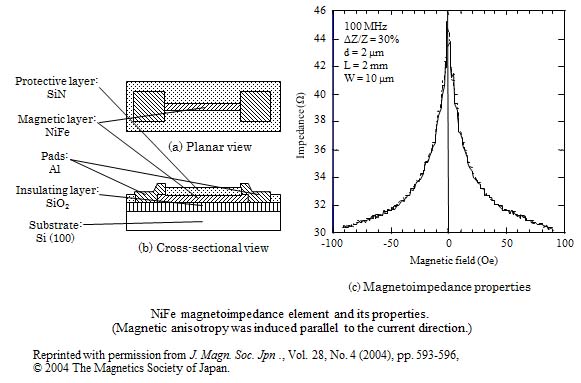
A micromachined NiFe thin film magnetoimpedance (MI) element was developed and its MI properties were investigated. The value for which the MI element had the best performing MI element was a sensitivity of 38%, which is much better than that for a conventional magnetoresistance (MR) sensor. Therefore, this micromachined thin film MI element has great potential for use in highly sensitive integrated magnetic sensors.
Part II.
Research Reports
-
pages 41-50
Noriaki Hirose, Ryosuke Tajima, Kazutoshi Sukigara and Yuji Tsusaka
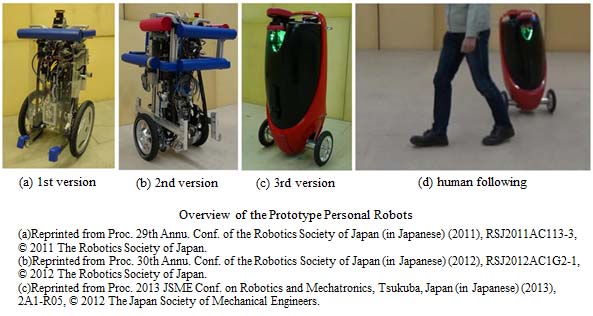
Recently, various kinds of personal robots (PRs) have been developed to support traveling in our aging society. Toyota Central R&D Labs., Inc. is working on research and development of the PR. The PR, shown in the figure, can carry baggage and automatically follow a human being. In this paper, a novel posture control approach based on zeroing the control input is proposed to realize high traveling performance.
Brief Reports
-
8. Hybrid Quantum-classical Simulation of Intercalation Compounds
 (937kB)
(937kB)pages 51-53
Nobuko Ohba and Shuji Ogata
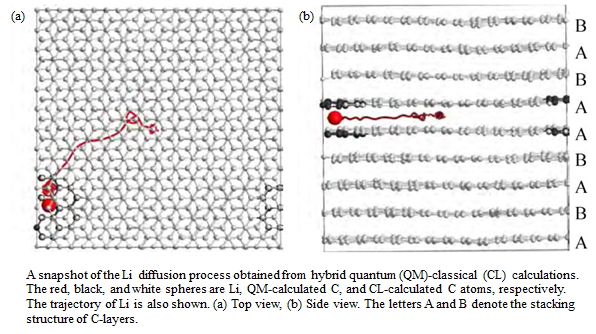
The hybrid quantum-classical simulation method is applied to a Li-graphite intercalation compound in order to understand the thermal diffusion mechanism of the Li ion in the graphite. The diffusion coefficient obtained from the present hybrid dynamics is in good agreement with the experimental value obtained in the dilute case of Li density.
